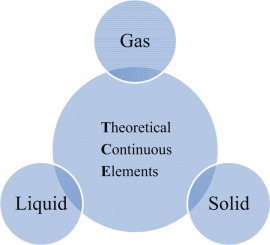当前位置:
X-MOL 学术
›
Chem. Eng. Sci.
›
论文详情
Our official English website, www.x-mol.net, welcomes your feedback! (Note: you will need to create a separate account there.)
Numerical Simulation of Gas-liquid-solid Three-phase Flow with the Construction of Theoretical Continuous Elements
Chemical Engineering Science ( IF 4.7 ) Pub Date : 2020-07-01 , DOI: 10.1016/j.ces.2020.115633 Yang Yu , Tongchuan Suo , Wei Tan , Zheng Li
Chemical Engineering Science ( IF 4.7 ) Pub Date : 2020-07-01 , DOI: 10.1016/j.ces.2020.115633 Yang Yu , Tongchuan Suo , Wei Tan , Zheng Li

|
Abstract We introduce the concept of theoretical continuous element (TCE) to the computational fluid dynamics (CFD) framework of gas-liquid-solid (GLS) systems, which results in a drag model that can cover both the binary and ternary drag interaction. We test the TCE method with a cylindrical stirred reactor and a cuboid GLS three-phase fluidized bed. For the former, we find that adopting TCE drag model improves the radial concentration profiles of the gas and solid phases, especially for the small r region. For the latter, we perform 3-dimensional simulations on the rising procedure of an injected bubble, extract the projected bubble area and obtain good agreement with experiments. The simulation results further show the formation of stable vortices and airways. Moreover, we find that inside the bubble, the liquid phase follows the motion of the gas phase, while outside the bubble, the liquid phase moves synchronously with respect to the solid phase.
中文翻译:

气液固三相流动的理论连续元构建数值模拟
摘要 我们将理论连续元 (TCE) 的概念引入到气-液-固 (GLS) 系统的计算流体动力学 (CFD) 框架中,从而形成了一个可以涵盖二元和三元阻力相互作用的阻力模型。我们使用圆柱形搅拌反应器和长方体 GLS 三相流化床测试 TCE 方法。对于前者,我们发现采用 TCE 阻力模型改善了气相和固相的径向浓度分布,特别是对于小 r 区域。对于后者,我们对注入气泡的上升过程进行了 3 维模拟,提取了投影气泡区域并与实验取得了良好的一致性。模拟结果进一步显示了稳定涡流和气道的形成。此外,我们发现在气泡内部,
更新日期:2020-07-01
中文翻译:

气液固三相流动的理论连续元构建数值模拟
摘要 我们将理论连续元 (TCE) 的概念引入到气-液-固 (GLS) 系统的计算流体动力学 (CFD) 框架中,从而形成了一个可以涵盖二元和三元阻力相互作用的阻力模型。我们使用圆柱形搅拌反应器和长方体 GLS 三相流化床测试 TCE 方法。对于前者,我们发现采用 TCE 阻力模型改善了气相和固相的径向浓度分布,特别是对于小 r 区域。对于后者,我们对注入气泡的上升过程进行了 3 维模拟,提取了投影气泡区域并与实验取得了良好的一致性。模拟结果进一步显示了稳定涡流和气道的形成。此外,我们发现在气泡内部,


























 京公网安备 11010802027423号
京公网安备 11010802027423号